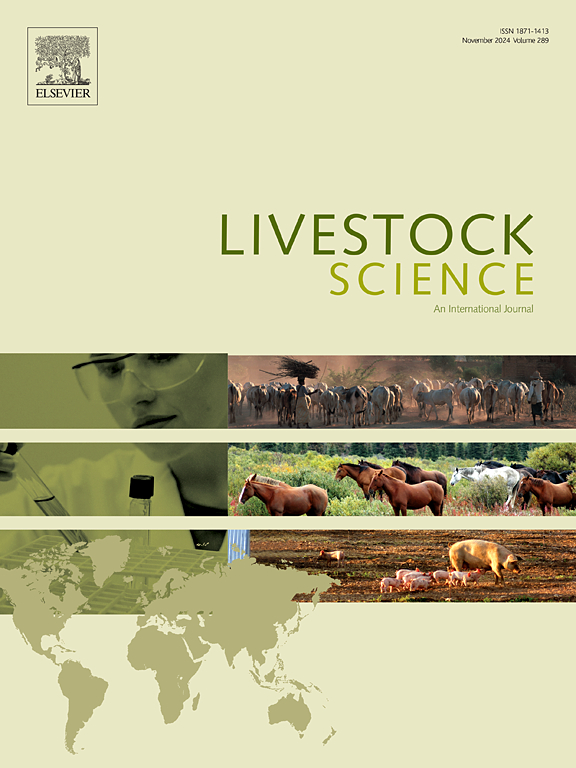Validity and reliability of animal-based measures of welfare protocols in finisher pigs
IF 1.9
3区 农林科学
Q2 AGRICULTURE, DAIRY & ANIMAL SCIENCE
引用次数: 0
Abstract
Animal-based measures are a key part of welfare protocols, but to what extent these measures can report differences in welfare among pigs provided e.g. with different accesses to valued resources (i.e., whether the measures are valid) and whether a single measurement point is representative of the entire production period (i.e., whether the measures are reliable) is not well documented. In this study, a total of 814 finishing pigs were assigned to either 1 of 4 welfare improving treatments (increased space: 1.4 [S9] or 2.1 m2 [S6] per pig, provision of roughage [R], extra provision of enrichments [E]) or to a control treatment (C). Animal-based measures of a refined version of the Welfare Quality® protocol were assessed weekly (Batch 1) or once during the period (Batch 2). All parameters showed poor reliability throughout the 10 weekly assessments of Batch 1. Among the clinical parameters, only few indicators showed differences between welfare improving treatments. Among the behavioural indicators, differences were recorded for manipulation of the pen (C > S6) and of enrichment materials (E > all other treatments). When aggregating indicators into domains (nutrition, health, environment, behaviour), the reliability did not improve, and treatment effects were recorded within the domain of nutrition (R > all other treatments), and behaviour (E > S9). When aggregating domains into a final welfare score, both reliability and validity, as defined for the study, were poor. These results call for attention over the interpretation of the animal-based measures obtained from a single welfare assessment.
育肥猪福利方案的有效性和可靠性
基于动物的测量是福利协议的关键部分,但这些测量在多大程度上可以报告猪之间的福利差异,例如,提供不同的有价值资源(即,测量是否有效),以及单个测量点是否代表整个生产期间(即,测量是否可靠)没有很好的记录。在本研究中,共有814头育肥猪被分配到4个福利改善处理(增加空间:每头猪1.4 [S9]或2.1 m2 [S6],提供粗饲料[R],额外提供营养物[E])中的1个处理或对照处理(C)。改良版福利质量方案的基于动物的措施每周评估一次(第1批)或在此期间评估一次(第2批)。在第1批的10周评估中,所有参数的可靠性都很差。在临床参数中,只有少数指标显示福利改善治疗之间的差异。在行为指标中,记录了操作笔的差异(C >;S6)和浓缩材料(E >;所有其他治疗)。当将指标汇总到各个领域(营养、健康、环境、行为)时,可靠性没有提高,治疗效果记录在营养领域内(R >;所有其他治疗)和行为(E >;S9)。当将这些领域汇总成最终的福利评分时,研究定义的信度和效度都很差。这些结果要求对从单一福利评估中获得的基于动物的措施进行解释。
本文章由计算机程序翻译,如有差异,请以英文原文为准。
求助全文
约1分钟内获得全文
求助全文
来源期刊

Livestock Science
农林科学-奶制品与动物科学
CiteScore
4.30
自引率
5.60%
发文量
237
审稿时长
3 months
期刊介绍:
Livestock Science promotes the sound development of the livestock sector by publishing original, peer-reviewed research and review articles covering all aspects of this broad field. The journal welcomes submissions on the avant-garde areas of animal genetics, breeding, growth, reproduction, nutrition, physiology, and behaviour in addition to genetic resources, welfare, ethics, health, management and production systems. The high-quality content of this journal reflects the truly international nature of this broad area of research.
 求助内容:
求助内容: 应助结果提醒方式:
应助结果提醒方式:


